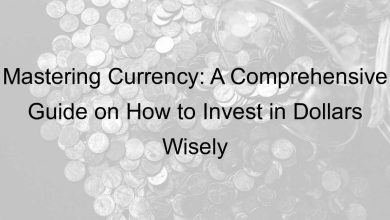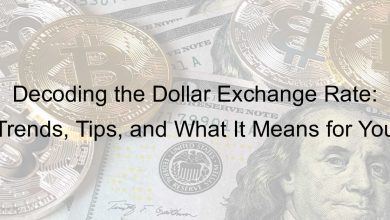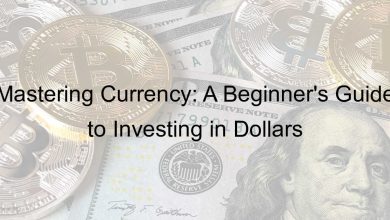Navigating the Currency Maze: Your Ultimate Guide to Dollar to Euro Conversion

In our increasingly interconnected world, understanding currency exchange rates is more important than ever. Whether you’re planning a trip to Europe or simply curious about international markets, knowing how to navigate the currency maze can be invaluable. This guide will walk you through the essentials of dollar to euro conversion, providing you with the tools you need to make informed financial decisions. By demystifying the process, you can easily manage your expenses, travel more efficiently, and take advantage of favorable exchange rates. Let’s dive in together and explore this fascinating topic!
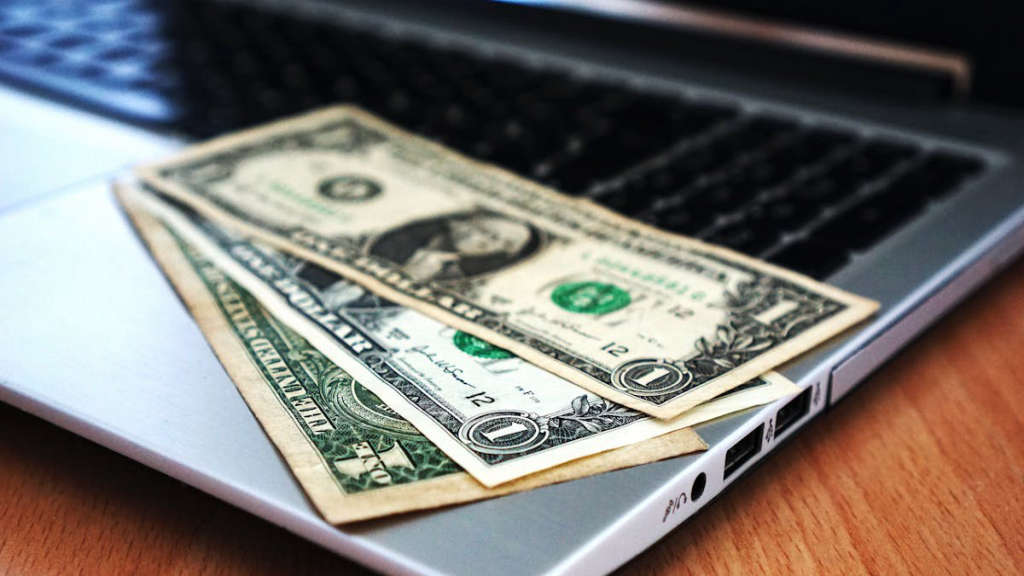
Understanding the Dollar to Euro Exchange Rate: Factors That Influence Conversion
The exchange rate between the dollar and the euro can seem perplexing, primarily due to the myriad of factors affecting it. Understanding these nuances is essential for anyone involved in international trade or travel.
Key Influencing Factors
- Economic Indicators: Elements such as GDP growth, employment rates, and inflation significantly sway exchange rates. Stronger economic performance typically elevates a currency’s value.
- Political Stability: Nations with stable governments usually enjoy stronger currencies. Unrest or uncertainty can lead to declines in foreign investment.
- Interest Rates: Central banks dictate interest rates, which can attract or deter foreign capital. Higher rates generally result in a stronger currency.
To add another layer, market perception plays a crucial role. Traders often react to news, whether it’s positive or negative. For instance, a minor change in a country’s economic forecast could lead to major fluctuations in the exchange rate. Consequently, staying informed is vital. It allows participants in the market to make more calculated decisions. Thus, the interplay of these factors creates a dynamic environment for anyone involved in currency conversion.
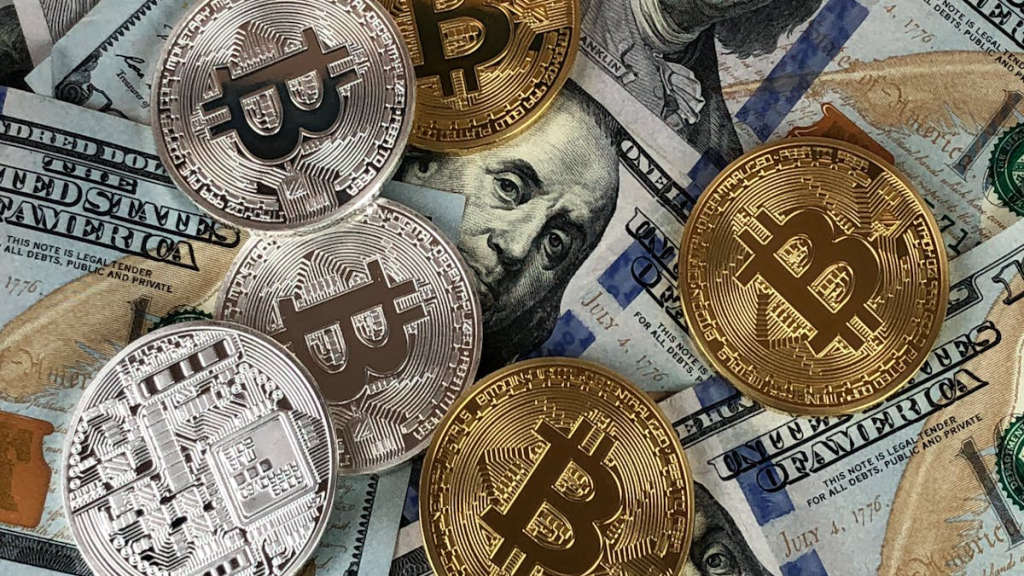
Top Tools and Resources for Accurate Dollar to Euro Currency Conversion
Navigating the complex world of currency conversion can be daunting. Fortunately, several tools stand out for their reliability and user-friendliness. For instance, XE.com has long been a favorite among travelers and businesses alike. It provides real-time exchange rates, allowing you to make informed decisions. You can also set up alerts to track rate fluctuations, which is particularly useful if you’re planning a large purchase.
Mobile Apps: Handy and Efficient
In addition to web resources, mobile applications like OANDA and Currency Converter Plus offer outstanding features right at your fingertips. These apps usually come with calculators that simplify the conversion process. However, be cautious; not all apps update their rates in real-time, so it’s crucial to verify the accuracy.
Finally, while online forums and blogs provide advice, always cross-reference the information you gather. Trends can change swiftly, and relying solely on anecdotal evidence might lead to confusion. With these tools in your arsenal, you can approach currency conversion with confidence and clarity.
How to Maximize Your Currency Exchange When Traveling to Europe
Traveling to Europe can be an exhilarating experience, but navigating the intricacies of currency exchange might become daunting. To maximize your currency exchange, it’s crucial to plan ahead. Start by researching the current exchange rates. Apps can provide real-time data, helping you discern whether you’re getting a fair deal.
Many travelers assume that airport exchanges offer the best rates, but often this isn’t the case. Alternatively, consider using local banks or authorized kiosks, as they typically offer more favorable rates. However, be cautious. Some places might charge hidden fees that could eat into your savings.
Using Credit Cards Wisely
Using a credit card can simplify transactions and often provides competitive exchange rates. Yet, ensure it doesn’t impose foreign transaction fees. In addition, notifying your bank about your travel plans can prevent any unexpected card blocks due to suspicious activity. Moreover, withdrawing cash from ATMs can be advantageous, but check if your bank has partnerships with local banks to reduce withdrawal fees.
Ultimately, navigating currency exchange is not just about finding the right place. It’s about understanding the system and making informed choices that enhance your overall travel experience.
The Impact of Economic Trends on Dollar to Euro Fluctuations
The relationship between economic trends and currency fluctuation is intricate. The dollar-to-euro exchange rate serves as a vivid illustration of this complexity. Several factors play pivotal roles in shaping this dynamic.
- Interest Rates: Central banks adjust rates based on economic conditions. Higher interest rates in the U.S. often attract foreign capital, increasing dollar strength.
- Inflation Rates: Inflation affects purchasing power. A rising inflation rate in one area can diminish its currency value globally.
- Political Stability: Confidence in a nation’s governance can lead to a stronger currency. Political unrest, on the other hand, creates uncertainty, affecting investments.
This delicate interplay means that traders and investors must stay vigilant. Economic indicators often send mixed signals, leading to confusion. For instance, a robust job report in the U.S. might initially strengthen the dollar, yet external factors, like geopolitical tensions, can diminish this effect.
In summary, understanding these economic trends can empower investors. Staying informed not only aids in making better financial decisions but also helps navigate the unpredictable waters of currency exchanges.
Common Mistakes to Avoid in Dollar to Euro Conversion
Converting dollars to euros may seem straightforward, but many make common errors that can lead to significant discrepancies. First, relying solely on outdated exchange rates can skew your calculations. Currency values fluctuate, often dramatically within a single day. Thus, it’s vital to check the current rate just before conversion.
Another frequent misstep involves ignoring transaction fees. Banks and currency exchange services typically charge fees that reduce your actual converted amount. Therefore, don’t forget to factor these costs into your calculations.
Psychological Pricing Effects
Moreover, many individuals mistakenly perceive the dollar as inferior due to its numerical value. However, resolution comes when you realize that a simple numerical comparison doesn’t reflect the real economic scenario. This misunderstanding can lead to poor financial decisions.
Lastly, remember that context matters. A trip to Europe may require a different conversion strategy compared to making a long-term investment. Always assess your needs carefully. By avoiding these traps, you ensure a smoother financial experience during your transactions.
Expert Tips for Investing in Euros: A Guide for Dollar Holders
As the global economy shifts, many dollar holders find themselves contemplating investments in euros. Understanding the nuances of the eurozone can be daunting, yet rewarding if navigated wisely. First and foremost, ensure you grasp the current state of the euro. Economic indicators, such as inflation rates and employment figures, can significantly influence currency strength. Consequently, stay informed about both European Central Bank (ECB) policies and geopolitical events.
Timing Your Investment
Timing plays a vital role in currency investment. Keeping an eye on market trends and fluctuations can help you determine the best moments to exchange dollars for euros. Remember, exchange rates can be volatile, thus leading to unpredictable outcomes. In this regard, consider setting alerts for favorable rate changes. Additionally, don’t overlook the impact of global events. These can create opportunities, but they may also introduce unexpected risks.
Diversification is Key
Lastly, think about diversifying your investments. While focusing on euros, explore other currencies or assets to mitigate risks. This strategy can provide a cushion during market downturns. Investing is a journey, not a sprint. So, being patient and strategic can yield fruitful results.
The Future of Dollar to Euro Exchange: Predictions and Insights
As we navigate the complexities of the global economy, the dollar to euro exchange rate remains a focal point for many investors and businesses alike. Predictions are inherently uncertain, especially in a landscape influenced by geopolitical shifts and economic policies. Many analysts propose contrasting views, which can be both enlightening and confusing.
Factors Influencing Exchange Rates
- Monetary Policy: The decisions made by the Federal Reserve and the European Central Bank can significantly impact the exchange rate, leading to fluctuations that might catch even seasoned investors off guard.
- Economic Indicators: Metrics such as GDP growth, employment rates, and inflation levels play vital roles. However, the interpretation of these indicators can be subjective, sometimes sparking debates among economists.
- Global Events: Unexpected occurrences like trade agreements or political turmoil can sway the market dramatically. Investors should remain vigilant, as these situations may arise suddenly and alter predictions.
In essence, while one might be tempted to predict a stable trend, it is crucial to approach future forecasts with caution. The dynamic interplay of factors involved presents an ever-evolving narrative in the exchange landscape.

